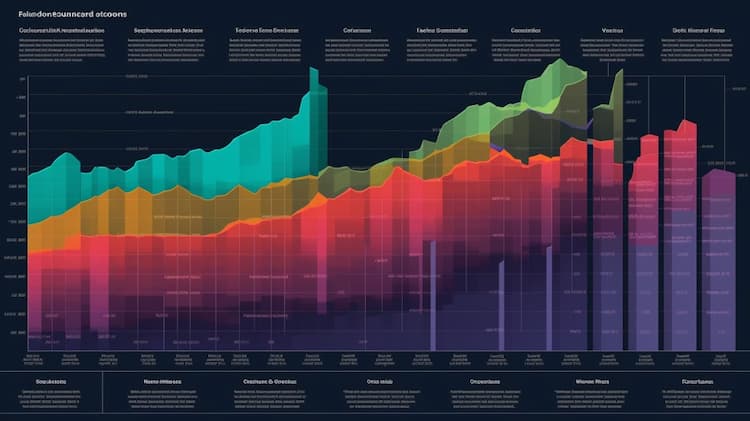
What Is the underlying index that the IEFA ETF aims to track?
When it comes to investing in the stock market, exchange-traded funds (ETFs) have gained significant popularity among investors. They offer diversification, liquidity, and transparency, making them an attractive choice for both individual and institutional investors. In this article, we will delve into one specific ETF, the IEFA, and explore the underlying index it aims to track.
IEFA Understanding ETFs
To better understand the IEFA ETF, it is essential to grasp the concept of ETFs. ETFs are investment funds traded on stock exchanges, just like individual stocks. They aim to replicate the performance of a specific index, such as the S&P 500 or the NASDAQ-100. ETFs offer investors exposure to a diversified portfolio of securities, typically at a lower cost compared to traditional mutual funds.
To track a particular index, an ETF must follow a specific set of rules known as the underlying index methodology. The underlying index acts as a benchmark for the ETF's performance. In the case of IEFA, the ETF aims to track the performance of the MSCI EAFE Index.
The MSCI EAFE Index is a widely recognized benchmark that represents the performance of developed market stocks in Europe, Australasia, and the Far East (EAFE). It includes companies from 21 developed countries, excluding the United States and Canada. The index covers a broad range of sectors, including financials, consumer discretionary, industrials, healthcare, and more.
By investing in the IEFA ETF, investors gain exposure to a diversified portfolio of international equities, capturing the performance of developed markets outside of North America.
How does the IEFA ETF differ from IEMG?
While discussing the IEFA ETF, it's worth mentioning another ETF that investors often come across—the IEMG ETF. Both IEFA and IEMG focus on international equities, but they have distinct differences.
IEFA, as we discussed earlier, tracks the MSCI EAFE Index, which includes developed market stocks in Europe, Australasia, and the Far East. On the other hand, IEMG tracks the performance of the MSCI Emerging Markets Index. The MSCI Emerging Markets Index represents the performance of large and mid-cap stocks across 27 emerging market countries.
By investing in the IEFA ETF, investors gain exposure to developed international markets, while the IEMG ETF offers exposure to emerging markets. Each ETF provides unique investment opportunities, catering to different risk preferences and objectives.
 IEFA overlap What Is the underlying index that the IEFA ETF aims to track?
IEFA overlap What Is the underlying index that the IEFA ETF aims to track?
Understanding the Benefits of Investing in ETFs
Now that we have a clearer picture of the IEFA ETF and its underlying index, let's explore the benefits of investing in ETFs in general.
Diversification: ETFs typically hold a diversified portfolio of securities, reducing the risk associated with investing in individual stocks. By investing in an ETF like IEFA, investors gain exposure to a broad range of international equities, spreading their risk across multiple companies and sectors.
Liquidity: ETFs trade on stock exchanges, providing investors with liquidity. They can be bought or sold throughout the trading day at market prices. This makes ETFs a flexible investment option, allowing investors to enter or exit positions quickly.
Transparency: ETFs disclose their holdings daily, allowing investors to see the underlying securities they own. This transparency helps investors make informed decisions based on the ETF's composition and align their investments with their investment strategies.
Cost Efficiency: ETFs generally have lower expense ratios compared to mutual funds. Since they aim to replicate the performance of an index, ETFs tend to have lower management fees. This cost efficiency can positively impact long-term investment returns.
In conclusion, the IEFA ETF aims to track the performance of the MSCI EAFE Index, which represents developed market stocks in Europe, Australasia, and the Far East. By investing in the IEFA ETF, investors can gain exposure to a diversified portfolio of international equities, capturing the performance of developed markets outside of North America.
ETFs like IEFA provide investors with a range of benefits, including diversification, liquidity, transparency, and cost efficiency. It's essential for investors to conduct thorough research and understand the underlying index and the investment objectives of an ETF before making any investment decisions.
Remember, investing involves risks, and it's crucial to consult with a financial professional who can provide personalized advice based on your specific financial situation and goals.
Disclaimer: This article does not provide any investment advisory services. Always consult with a financial professional before making any investment decisions.
IEFA quote and analysis
Discover the top holdings, correlations, and overlaps of ETFs using our visualization tool.
Our app allows you to build and track your portfolio.
To learn more about the IEFA iShares Core MSCI EAFE ETF, access our dedicated page now.
FAQ
What is the IEFA ETF?
The IEFA ETF, or iShares Core MSCI EAFE ETF, is an exchange-traded fund that provides investors with exposure to international equity markets, excluding the United States and Canada.
What is the underlying index that the IEFA ETF aims to track?
The IEFA ETF aims to track the performance of the MSCI EAFE Investable Market Index (IMI), which represents a broad range of companies from developed markets in Europe, Australasia, and the Far East.
What types of companies are included in the IEFA ETF?
The IEFA ETF includes companies from various sectors, such as financials, industrials, consumer goods, healthcare, and more, representing a diverse range of developed market companies outside of the United States and Canada.
How does the IEFA ETF work?
The IEFA ETF works by pooling investors' funds to purchase a portfolio of securities that closely replicate the performance of the underlying index. By investing in the IEFA ETF, investors gain exposure to a broad basket of international companies from developed markets.
What are the advantages of investing in the IEFA ETF?
Investing in the IEFA ETF offers potential benefits such as diversification across developed international markets, exposure to companies from various countries and sectors, the opportunity to participate in global economic growth, and the ability to access international markets without the need for individual stock selection. It simplifies investing in international equities, offers liquidity, and allows for portfolio diversification.



